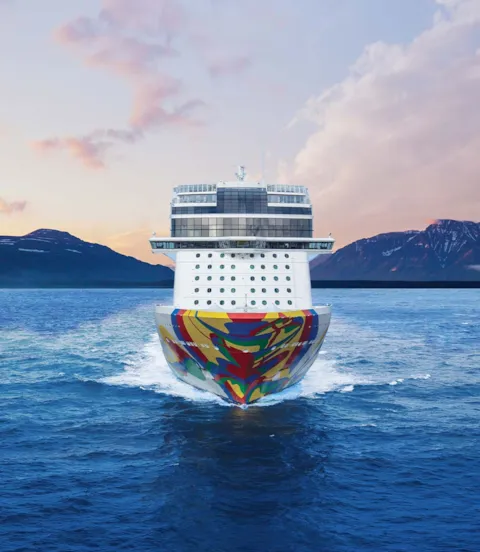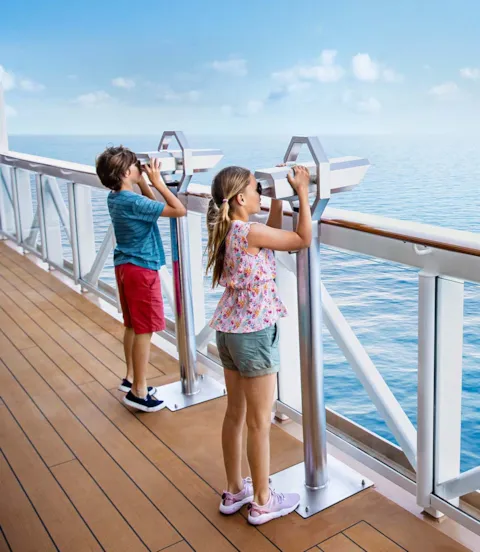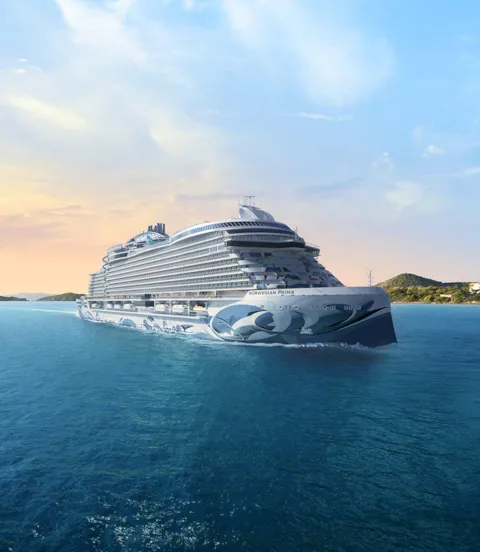Implementing an effective ESG strategy
For the cruise industry, charting a sustainable pathway for the future is more important than ever. The leading global cruise company Norwegian Cruise Line Holdings has embraced this and is committed to making a lasting impact on the world as responsible corporate citizens and ESG leaders with their sustainability programme.
“For the cruise industry, there is urgency here and it’s not just about telling the story of ESG,” says Emily Bishop, Norwegian Cruise Line Holding’s Director of ESG (environmental, social and governance), emphasizing ESG is a business imperative for cruise companies.

Sail & Sustain programme charts path to more sustainability
The cruise industry is a people-oriented industry. Far beyond the impact the industry has on millions of cruise customers each year, it plays an important role in creating jobs and economic opportunities for millions more worldwide.
Recognizing this responsibility and their leadership position, Norwegian Cruise Line Holdings (NCLH) has stepped to the forefront, creating a pathway to a more sustainable future with the company’s global sustainability programme, Sail & Sustain. Improving sustainability in the cruise industry is a complex challenge, but the world’s third-largest cruise operator is committed to making a positive impact far beyond the company’s three award-winning brands and their 28-vessel fleet. “We aim to transform how we operate on a day-to-day basis by injecting sustainability into all aspects of our approach,” says Emily.

Structuring the mission
As NCLH’s Director of ESG, Emily is responsible for helping to shape the company’s ESG strategy, including driving decarbonization efforts. “The ESG department is well-positioned to lead company-wide transformation by identifying key internal stakeholders from across the business and external stakeholders for engagement. We can effectively assess the variety of expectations, perspectives and experiences and shape how the company should approach sustainability.” Given the impact the transformation has on the entire organization, unsurprisingly, it’s quite an extensive list of stakeholders engaged in the process. “Looking at our Decarbonization Executive Steering Committee as an example, it’s comprised of our CEO, CFO, EVP of Vessel Operations and other executives to help govern and steer our climate action strategy. And in support of this, we implemented a Decarbonization Action Group with representatives from various teams to execute, advance and shape the strategy in their respective areas. Through this structure, I know that even with the complex challenges ahead, our strategy will continue to be thoughtful and coordinated.”

Getting the ESG transformation right
DNV’s Simon Mockler, Americas Regional Director of Decarbonization, sees ESG as a fascinating confluence, especially for the cruise industry. “There is so much to consider. There are important investor relations for the major cruise companies, and then there is the consumer-facing angle. They have these great big floating assets that sit on the balance sheet for years, along with the environment around the ships, which includes the societal and local impact that they have wherever they go,” he stated. DNV emphasizes that every operator’s situation is unique and has its own set of considerations. “From our experience in supporting organizations in developing their actionable business strategies, it is complex, but addressing the ESG transformation comes by understanding the risks and opportunities and how they affect the business.”

Information-based decisions are more sustainable
The decision-making process is subject to an increased level of scrutiny when it comes to matters of ESG, and it’s influencing the kinds of conversations that companies have with one another today. “An ESG lens is being further integrated and embedded in many facets of our business,” said Emily. “Especially when it comes to business relationships, we’re determining how best we can support one another on our ESG efforts. For example, we’ve been having more discussions with ports on their own journey to decarbonize and how we can improve our partnership to support one another.” NCLH conducted a Task Force on Climate-Related Financial Disclosure to understand and quantify the risks and uncertainties it may face under different hypothetical futures. The analysis included examining sea level rise, which provided insight into which ports will be impacted when and in what climate scenarios. “That information is helping us to understand how and where resiliency should be improved. That’s why it’s imperative for climate risk management to be baked into strategic developments.”

Sail & Sustain strategy
NCLH’s global sustainability programme Sail & Sustain is structured around five pillars: Reducing Environmental Impact, Sailing Safely, Empowering People, Strengthening Our Communities and Operating with Integrity and Accountability.

Governance (G) plays a key role
When it comes to ESG, Emily sees that Governance drives the Environment and the Social aspects. “I often say that to execute well on the ‘E’ and ‘S’, a solid foundation of the ‘G’ is required. Good governance practices drive effective change management. It allows for ESG to be integrated into our ‘thinking’ and embedded into our culture. When that happens, strategic questions are asked, like: what is the culture we want? How do we build it? What are our current processes, and how can we make them more efficient? How do we create coordination and collaboration across the organization? What about beyond the organization? With operating assets with a lifespan of at least 30 years, our decisions today will certainly impact our ‘E’ and ‘S’ strategies in the future. That’s why I put a lot of emphasis on the ‘G’.”

Focus on social aspects during the pandemic
“When I think about the past few challenging years, there were many quarters where our vessels weren’t sailing with passengers. Yet, we were still investing in environmental sustainability and supporting crew’s health, safety and overall well-being,” said Emily.
Covid-19 brought about a forced pause on life as we knew it and brought a unique opportunity to take stock of and reflect on what was and is important. When the pandemic appeared, the sustainability strategy of NCLH was mature, and the organization’s priorities were clear. Naturally, Sail & Sustain shifted to the forefront during the period.
In addition to the actions taken and the progress made during the pandemic, in returning to normal passenger operations, NCLH continued to emphasize the ‘S’ of ESG. “We also didn’t lose sight in supporting the ports and communities that our company and passengers love so much,” she added. “For many of our ports, the community’s economy is reliant on tourism for more than half their income. For example, there are thousands of small businesses and Alaskans that rely on cruise tourism during the summer season. During the pandemic last year, we donated $10 million in support of these ports and communities.” With passenger operations back up and running, the company has a campaign encouraging passengers to shop locally and support the port communities while visiting.

Leveraging digitalization for efficient reporting and governance
The maritime industry is defined today by two megatrends: digitalization and decarbonization. When it comes to how energy is used and consumed across the economy, digital technologies are already changing and expanding to create new opportunities to optimize energy use and decrease greenhouse gas emissions and spur the industry along the decarbonization pathway.
Reporting is an area where digitalization provides value, and with the increasingly complex regulatory landscape, the more automation that can be introduced to the process, the easier it becomes. In the maritime world ESG reporting covers topics such as recycling, greenhouse gas emissions, other pollutants to air, ecological impacts, business ethics, employee health and safety, and accident and safety management. DNV’s shipping advisory services support stakeholders in understanding and navigating the reporting requirements applicable to their business. “These reports serve to satisfy stakeholder demands for transparency on corporate responsibility issues and convey that the company has policies, initiatives and strategies to manage the ESG risks and opportunities,” Simon Mockler comments. DNV experts have assisted numerous stakeholders on their ESG reporting matters and managing the related risk, as well as advising operators on how to undertake the digitalization process. He continued, “From our experience, a very real challenge that many shipowners face is how to thrive in the present landscape. Overcoming this challenge involves understanding the business’s strategic goals, identifying digital transformation opportunities and developing and building solutions that enable the use of data to optimize and support decision-making.”
Emily views digitalization as a critical enabler for decarbonization. “The ESG journey is congruent with digitalization. Digitalizing processes enables greater efficiency and transparency. We can’t manage what we don’t measure. So, for me, digitalization plays a crucial role in allowing ease of access to information to facilitate governance and integration of ESG across the business.”
- Norwegian Cruise Line
- Norwegian Cruise Line Holdings